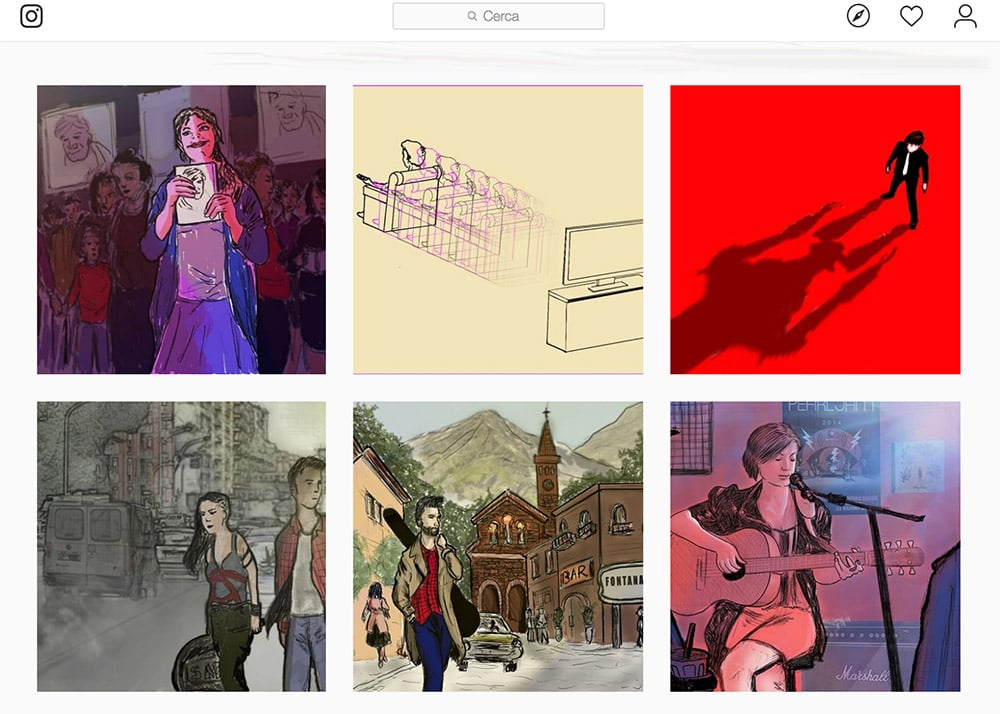Achieving a career in drawing and illustration is a goal for many, but not all succeed in transforming this passion into a profession that can financially sustain them. Over time, several abandon their pursuit, discouraged by perceived lack of talent or initial obstacles. However, talent is often not inborn but a skill that needs daily nurturing and practice.
To embark on a career as an illustrator involves several critical steps. This article outlines a practical guide with tips for becoming an illustrator.

1 – Starting as an Illustrator: The Initial Challenge
Establishing a strong foundation is vital in any artistic endeavor, including illustration. Initially, one should:
- Practice diligently: Mastery of the subject through daily practice is crucial, including understanding anatomy, color, and composition. Formal education in an illustration school might be advantageous, but it’s not mandatory. Online platforms like Skillshareoffer valuable courses by experienced illustrators.
- Experiment with Techniques: Whether digital or traditional, exploring various methods is key. Making mistakes and persisting is part of the process. Aim to produce regular work, such as completing one illustration per week. The book “How to Be an Illustrator ” is a great starting point.
- Study the Masters: Understanding both contemporary and historical illustrators is crucial for learning about different styles and techniques. “Fifty Years of Illustration” is a recommended resource to have a comprehensive understanding of the illustration field.

2 – Understanding Your Unique Style
After developing technical skills and studying various authors, the next step is introspection: identifying one’s unique style. Initially, there may be a tendency to imitate favorite illustrators, but finding a personal voice, influenced yet distinct, is vital. This involves discovering strengths and preferences, whether it’s children’s illustrations, sci-fi themes, or a blend of genres. The objective is to create work that aligns with specific marketing needs of magazines or media agencies, ensuring your illustrations tell a compelling story when combined with text.

3 – Establishing Your Brand as an Illustrator
Many illustrators are freelancers, necessitating not just skill but effective self-promotion. Personal branding goes beyond just a portfolio; it encompasses everything an illustrator does and represents. Key aspects include:
- Authenticity: Presenting a genuine image attracts followers and potential clients, helping build a reputable brand.
- Consistency: Maintaining a uniform style and language across all illustrations.
- Visual Identity: A recognizable logo and business cards are essential (here are some of our tips).
- Setting Goals: Establishing short, medium, and long-term objectives helps focus efforts and demonstrates active engagement in the industry.

4 – Promoting Work Offline
Experienced illustrators should actively seek commissions and connections. Viewing oneself as a business is crucial. Creating a strong portfolio is essential, as is engaging with the industry through fairs and events. Directly reaching out to art directors with tailored proposals and materials like postcards can be effective.

5 – Online Promotion Strategies
The internet is vital for an illustrator’s visibility. Creating an online portfolio, blogging about experiences, and maintaining a presence on platforms like Instagram, Facebook, Behance, and Dribble are crucial. Engaging with art directors via email, using platforms like LinkedIn for networking, and understanding the target company’s needs are important.

Becoming an illustrator requires patience, hard work, and years of building a technical base and client network. Passion is fundamental in this journey, along with the ability to self-promote and adapt creatively.

6 – Navigating Bureaucracy in Illustration
Understanding the legal and tax implications is necessary. Whether illustration is a primary profession or a side activity dictates different legal and tax considerations, such as whether to open a VAT number or operate under occasional collaboration limits.
7 – Continuous Learning and Networking
Success in illustration is an ongoing journey, not a final destination. Continuous learning, networking, and staying updated are crucial. Participating in workshops, attending trade fairs, and utilizing print resources are all part of ongoing development and networking in the field.
This guide offers a roadmap for those aspiring to become professional illustrators, emphasizing the importance of passion, continuous learning, and effective self-promotion.

